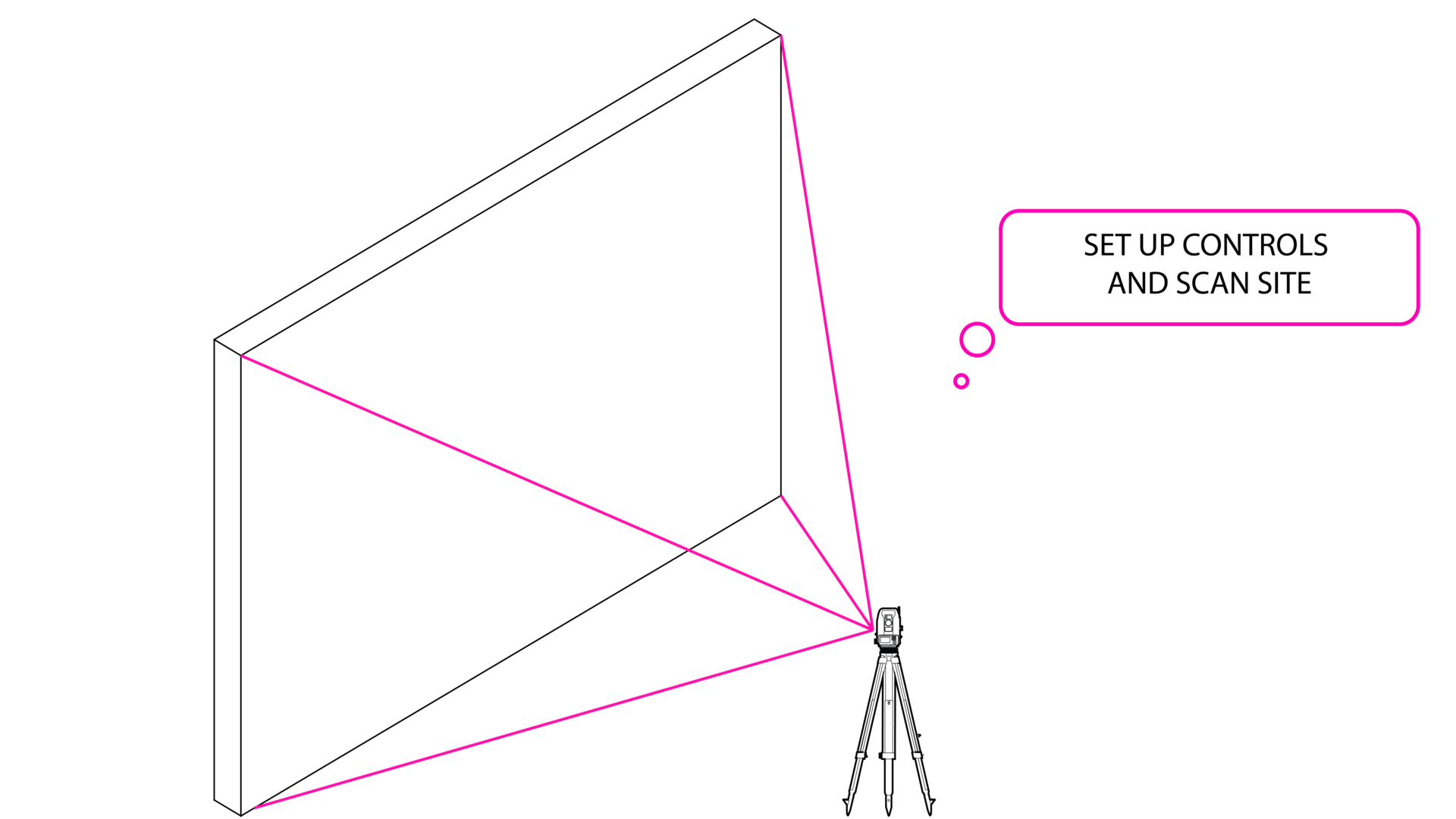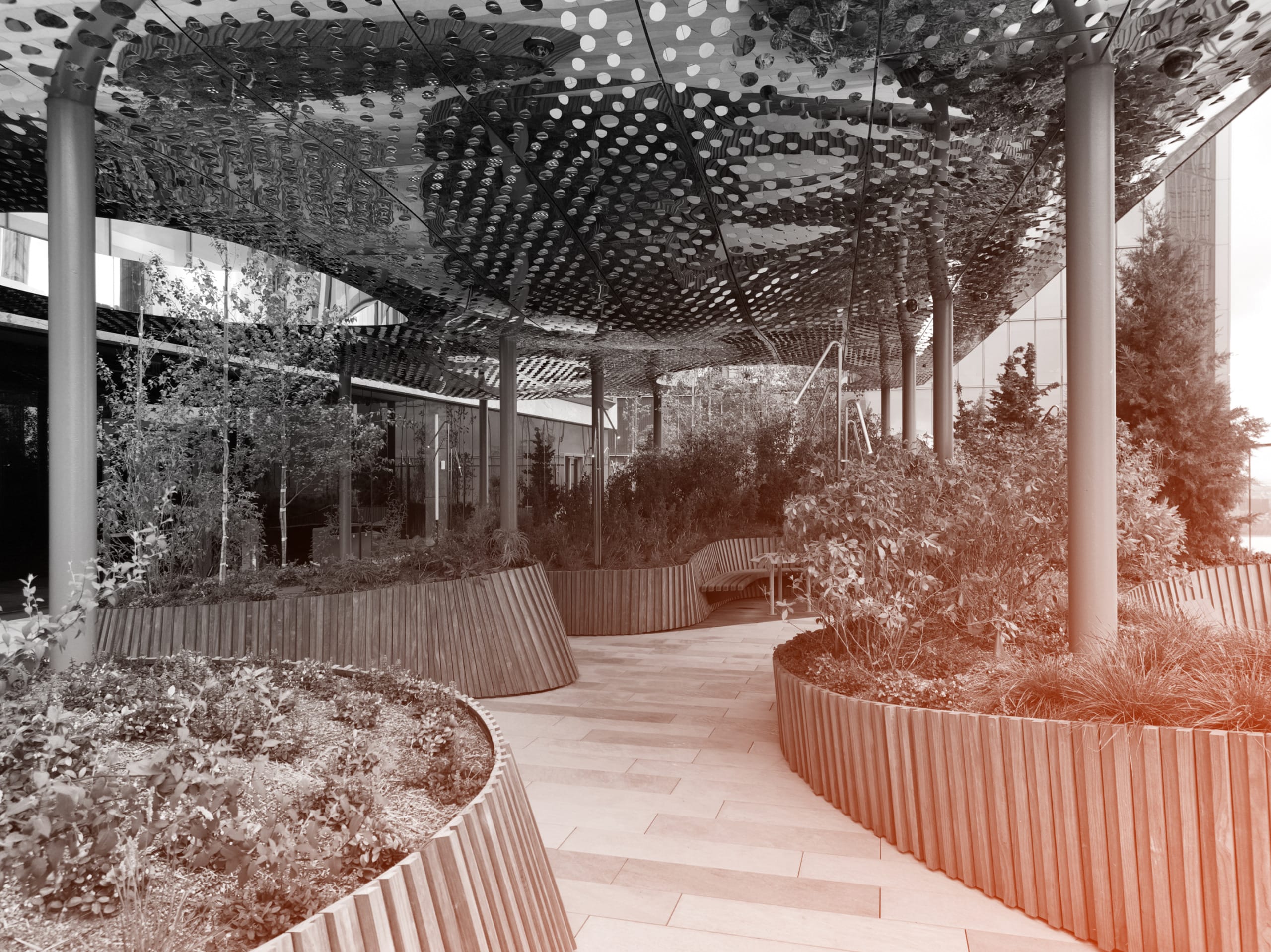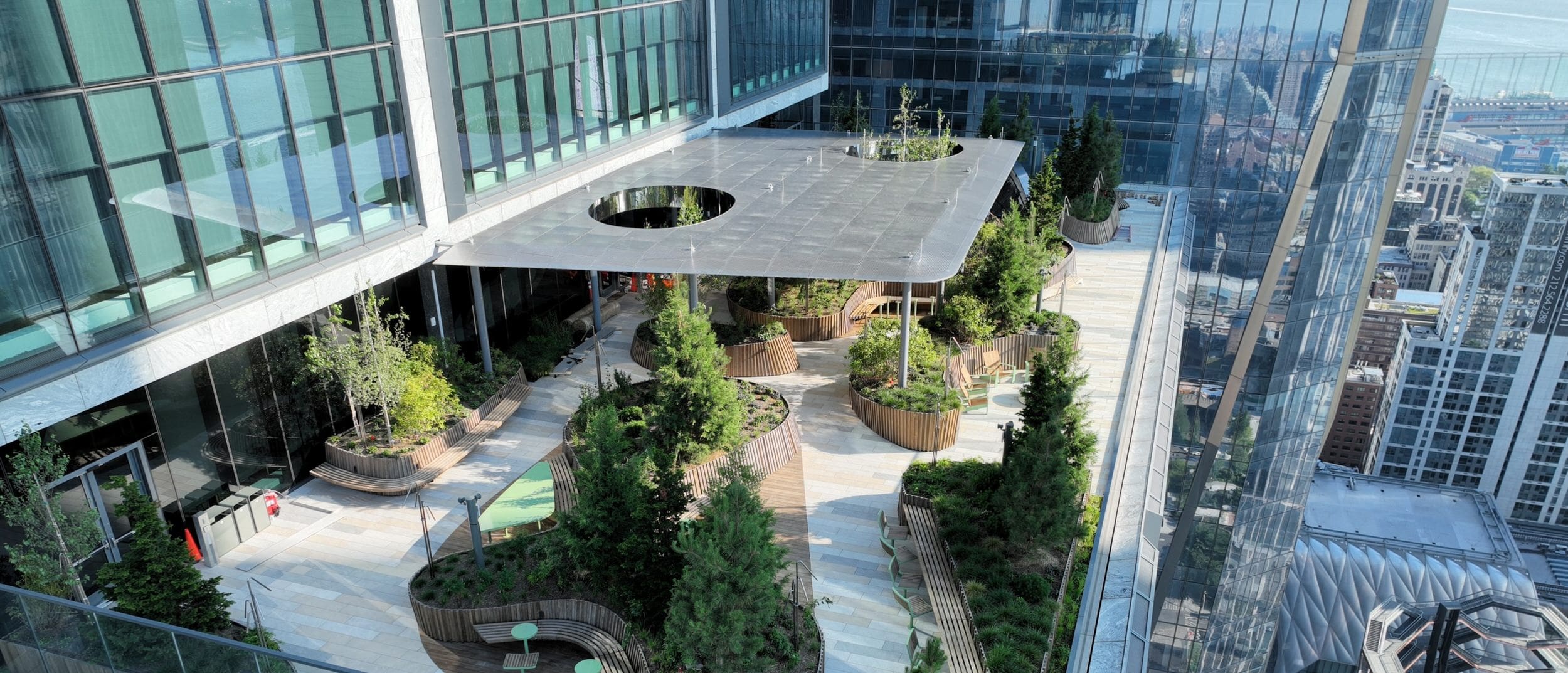R&D
Expanding Intelligent, On-Site Fabrication: Can Manufacturing and Logistics Be Simplified With More Transformable Geometries?
SoFi Stadium in Englewood, Calif. is an architecture, engineering, and construction marvel. Designed by HKS Architects and built by Turner Construction and AECOM Hunt, the 70,000-seat stadium also has a 6,000-seat venue and a 2.5-acre plaza, covered by a canopy of translucent ETFE membrane and 34,789 anodized aluminum panels—all unique in perforation and shape—and all fabricated by Zahner.
Our expertise in custom perforated metal panels was tested since all panels were manufactured in our Kansas City and Dallas facilities, using a mass customization process developed in coordination with the architect.
HKS designed a unique canopy and skin for SoFi Stadium featuring custom-perforated anodized aluminum panels from Zahner.
PHOTO © NIC LEHOUXIn the ever-evolving landscape of architectural fabrication, the journey from digital design to physical manifestation is often laden with complexity and significant expense. While the promise of customization is revolutionary, it introduces a unique challenge: the logistical labyrinth of tracking, sequencing, and assembling countless unique parts. Each piece, tailored to perfection in a controlled factory environment, must navigate a network of machines, operators, and facilities before it reaches its final destination on-site.
At SoFi, every panel variation introduced opportunities for errors. Any misstep, no matter how small, risked exponential cost overruns.
What If Design Doesn’t End in the Factory?
Inspired by this challenge, the Labs team led a workshop for the Rob|Arch (Robotics in Architecture) conference in Toronto in the Spring of 2024. We used this venue to explore a fundamentally different approach by asking, “What if design doesn’t end in the factory?”
Instead of pre-fabricating unique parts, we wanted to know if standard parts could remain uniform until installed. By applying on-site transformation techniques, we aimed to remove the penalties traditionally associated with variation, opening a path to greater efficiency, adaptability, cost-savings, and resilience in architectural fabrication.
Introducing On-Site Robotic Forming of Standard Parts
Our latest innovation in intelligent forming leverages auxetic principles to transform standard, unformed sheets into bespoke architectural elements right on the project site. On-site robotic measuring and surveying with SurveyLink is combined with on-site fabrication.
This method dramatically reduces the logistical burden of transporting and assembling unique parts. By bringing the fabrication process closer to the installation site, we unlock new levels of flexibility and adaptability, allowing design modifications to be made in real time.
Auxetics base geometry: a standard grid that can be transformed into unique instances.
PHOTO © A. ZAHNER COMPANY.Process overview.
PHOTO © A. ZAHNER COMPANY.Why Standard Parts?
Logistical Simplicity: Transporting flat-cut parts is straightforward and cost-effective, minimizing the need for complex tracking and reducing the risk of errors during transit.
Enhanced Adaptability: On-site forming enables immediate adjustments, ensuring that the final product responds perfectly to the realities of the installation environment.
Cost Efficiency: By eliminating multiple off-site manufacturing stages, we reduce overall costs and decrease the likelihood of costly rework.
Accelerated Installation: On-site forming streamlines the installation process, reducing downtime and improving project timelines. No wait for remakes.
Precision and Quality: With direct oversight from engineers and installers, on-site forming ensures that each part meets exacting standards for fit and finish.
Environmental Responsibility: This approach reduces the carbon footprint associated with transportation and minimizes material waste through precise, on-demand fabrication.
Auxetics exploration in Grasshopper - Negative Poisson's ratio.
PHOTO © A. ZAHNER COMPANY.Auxetics Exploration - Negative Poisson's ratio.
PHOTO © A. ZAHNER COMPANY.Auxetics Exploration - Negative Poisson's ratio.
PHOTO © A. ZAHNER COMPANY.Material and pattern studies.
PHOTO © A. ZAHNER COMPANY.On-site forming of pre-cut standard parts.
Try it Yourself
Use the configurator below to explore how different patterns can be created from the same standard panel. Drag the blue dots to change the pattern. You can change the view by scrolling in & out to zoom or use Command + Click (Mac) or Control + Click (Windows) to change the angle of view.
Looking Forward
The SoFi Stadium project pushed the boundaries of architectural fabrication, prompting us to rethink traditional processes. By embracing intelligent on-site fabrication, the industry can move toward a future where standard parts are transformed into custom elements at their destination. This innovation simplifies logistics and enhances efficiency, sustainability, and precision, empowering our partners to design and build high-profile structures with less waste and more significant impact.
Special thanks to our design partners Perkins&Will, Rob|Arch, and the University of Toronto for hosting our workshop and providing a space for us to explore this important concept with students.
The complete installation.
PHOTO © A. ZAHNER COMPANY.Next Steps
We’re proud to have a reputation for delivering projects with novel requirements and low construction tolerances. Our success is due in large part to two factors: a determination to stay at the forefront of cutting-edge technology and having a workforce that brings generations of experience in architectural metal work.
We are excited by these new methods that foster greater collaboration between avant-garde design and cutting-edge technology, robots and humans, and teams working in digital and physical spaces.
If you’d like to discuss the future of construction, we’d love to hear from you.



































 PHOTO ©️ Parrish Ruiz de Velasco (parrch.com)
PHOTO ©️ Parrish Ruiz de Velasco (parrch.com)



 © Fedora Hat Photography
© Fedora Hat Photography Photo by Andre Sigur | ARKO
Photo by Andre Sigur | ARKO PHOTO © NAHO KUBOTA
PHOTO © NAHO KUBOTA







 Ɱ, Creative Commons Attribution-Share Alike 4.0 International license, edited.
Ɱ, Creative Commons Attribution-Share Alike 4.0 International license, edited.
